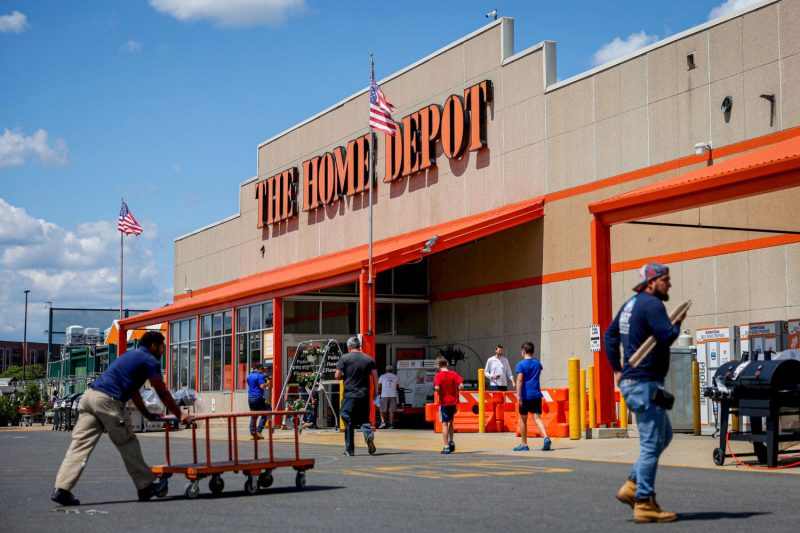Amidst a backdrop of rising inflation and economic uncertainty, home improvement giant Home Depot is forecasting a slowdown in sales as customers are becoming more cautious in their spending habits. This expectation comes after a significant surge in demand over the last two years sparked by the home improvement trend during the pandemic lockdowns.
Despite a robust housing market, Home Depot foresees a tenuous future. The underlying concern is that the wave of consumers making significant investments in home improvement during the pandemic is waning. As a result, the company expects a single-digit percentage increase in total sales this year, a marked slowdown from the double-digit growth observed in the last two years.
Home Depot’s fears reflect wider concerns about the health of the consumer economy. With inflation at its highest point in decades, rising to 6.2% in October, according to the U.S. Bureau of Labor Statistics, consumers are facing higher costs of living. These increased costs are having a chilling effect on discretionary spending, which includes home improvement projects that form Home Depot’s bread and butter.
Since the start of the pandemic, Home Depot has been riding a wave of increased demand. The lockdowns and remote work policies led many consumers to take up home improvements, creating a boom in demand for Home Depot’s products. Moreover, the strong housing market, buoyed by low mortgage rates, created additional demand as homeowners renovated their new homes.
Against this rosy backdrop, it may seem counterintuitive that Home Depot should be expecting a slowdown. However, several factors explain the corporation’s caution. Firstly, the increase in consumer prices, referred to as inflation, is eroding consumers’ disposable income, making them more hesitant to spend money on non-essential items such as luxury home improvements.
Secondly, the timing of the pandemic-led home improvement wave may be reverting to normal. Following two years of extraordinary demand for home improvement goods due to many people spending more time at home, this pent-up demand may be losing steam. As more individuals return to their workplaces and normal routines, they may strategize less spending on home improvement materials.
Thirdly, supply chain constraints are also weighing on Home Depot’s performance. The global supply chain has been disrupted by a combination of factors including, labor shortages, shipping difficulties, and raw material scarcity. This has led to increased costs for Home Depot, which in return, are passed along to the consumer, contributing to their resistance to spend.
Home Depot’s forecasted slowdown throws a spotlight on the potential headwinds facing the consumer discretionary sector, which depends on the willingness and ability of consumers to spend beyond the necessities. With inflation and economic uncertainty looming, consumers are expected to tighten their belts, leading to slower growth for companies like Home Depot that have previously benefited from increased consumer spending.
In conclusion, while Home Depot has seen unparalleled growth during the pandemic, it now faces a potentially difficult road ahead. The combined factors of rising inflation, reverting pandemic-led demand, and persistent supply chain challenges could slow its growth. How the company navigates this new landscape will be a subject to follow closely in the upcoming financial quarters. Furthermore, the circumstance of Home Depot serves as a broader reflection of the consumer economy facing pressures from the macroeconomic environment.




